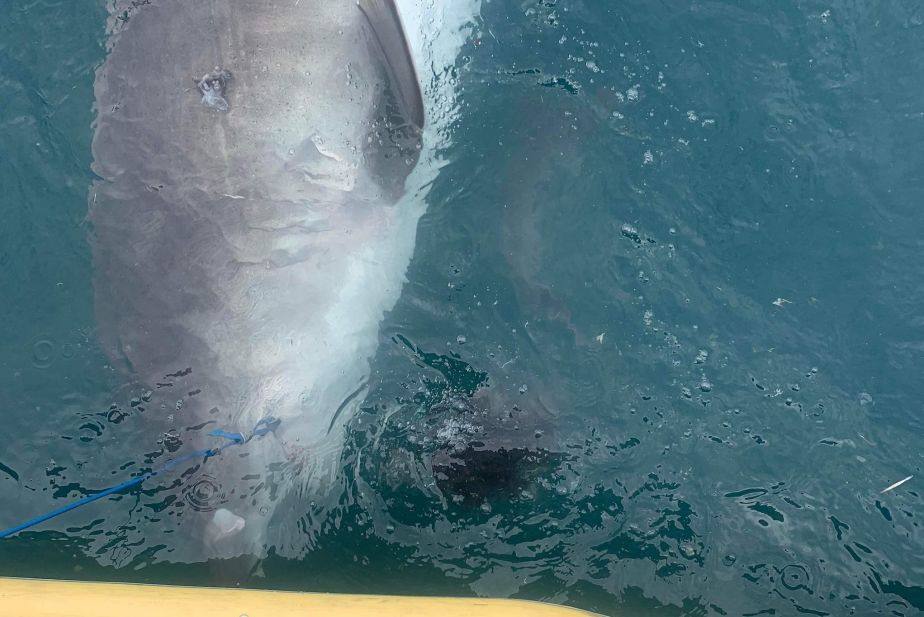A tiger shark vomited up an unexpected Australian icon, right in front of a surprised biologist.
Tiger sharks (Galeocerdo cuvier) aren’t exactly fussy eaters. They’ve been known to take bites out of seabirds, other sharks, and humans, as well as tires, license plates, and even a small TV.
But one of these marine predators couldn’t quite stomach a spiky short-beaked echidna (Tachyglossus aculeatus).
The incident was recorded off the coast of Orpheus Island in north Queensland, where a team of researchers caught the shark to tag it in 2022 as part of a three-year project.
Marine biologist Nicolas Lubitz from James Cook University in Australia captured the startling moment the 3-meter (9.4-foot) long shark spat out its barbed breakfast.
“It was a fully intact echidna with all its spines and its legs,” Lubitz says.
“I managed to only get one picture, but you can see the outline of the echidna in the water.”
Lubitz suspects this spiky spew was the result of a combination of stress and indigestion.
“It’s very rare that [tiger sharks] throw up their food but sometimes when they get stressed they can,” Lubitz says.
“In this case, I think the echidna must have just felt a bit funny in its throat.”

Echidnas have been known to swim from time to time, perhaps to stay cool, pushing their little snout up from the water like a snorkel. But most sightings have been in creeks, lakes, rivers, and swimming pools – rarely in the ocean.
So it’s pretty surprising that they might sometimes paddle out far enough from shore to become shark bait.
There have been sightings of Queensland echidnas swimming between the mainland and nearby islands, but it’s still quite unusual.
Lubitz says the unlucky echidna must have been swimming in shallows off the island, or perhaps even swimming between nearby islands, in search of food or a mate, when it was snapped up by the shark.
frameborder=”0″ allow=”accelerometer; autoplay; clipboard-write; encrypted-media; gyroscope; picture-in-picture; web-share” referrerpolicy=”strict-origin-when-cross-origin” allowfullscreen>
Because the dead echidna’s carcass was still fully intact when it was regurgitated, Lubitz suspects it was a recent kill the shark hadn’t begun to digest before taking the research team’s bait.
“It’s known that Tiger sharks will eat anything. They’re just a scavenger. I’ve seen videos of them eating a rock for no reason,” Lubitz says.
While the echidna certainly takes first prize for prickliest prey, the team observed another bizarre shark vom on a separate occasion during their time at sea. This time, a Tiger shark coughed up half a dugong.
“It threw up a big piece of blubber and then a full vertebral column. I think it was a dugong calf it had a go at,” Lubitz says.
Both sharks seemed to recover post-regurgitation, and were fitted with acoustic trackers before being sent on their way.
It’s hoped the trackers will provide scientists with data on the sharks’ movements for a decade.
So far 812 animals have been tagged as part of the Queensland Array project, including critically endangered eastern shovelnose rays (Apychotrema rostrata), also known as guitarfish.


 Coffee vs. wine: Scientific similarities topic of Orlando Science & Wine fundraiser
Coffee vs. wine: Scientific similarities topic of Orlando Science & Wine fundraiser


